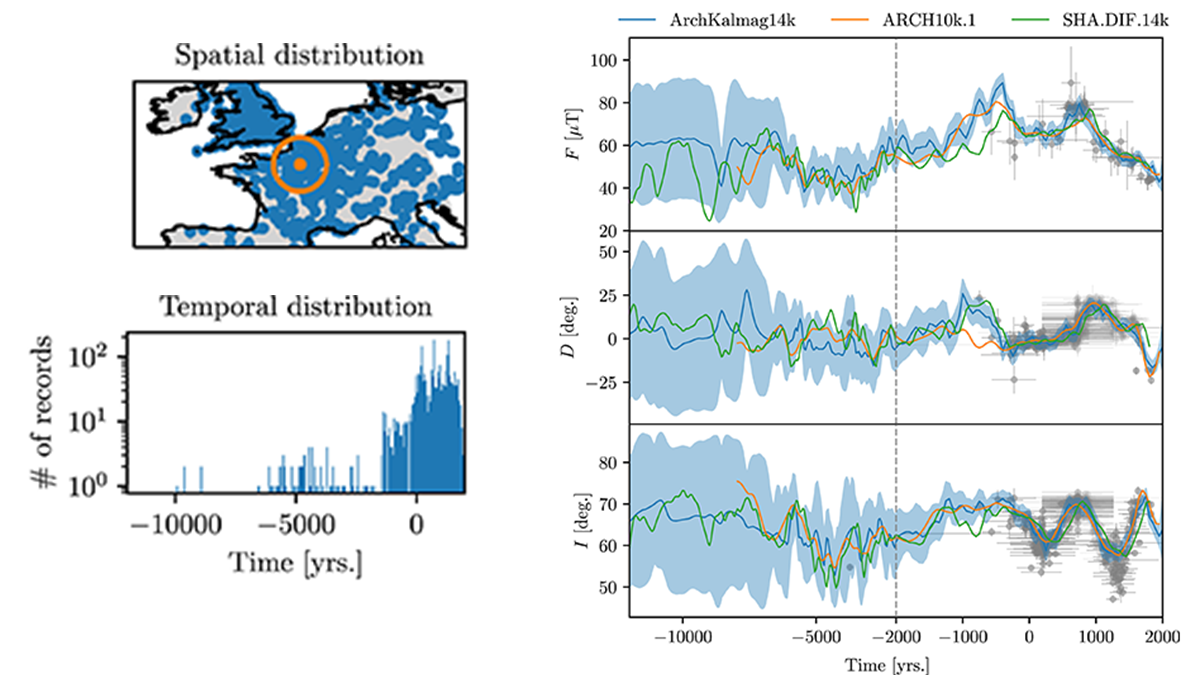Editors’ Highlights are summaries of recent papers by AGU’s journal editors.
Source: Journal of Geophysical Research: Solid Earth
Providing meaningful data-driven field models for the Holocene geomagnetic field is a major task. The input data distribution is highly uneven in space and time and computational limits impose major restrictions.
By introducing a Kalman filter approach, Schanner et al. [2022] overcome these computational limits. They provide a new field model for the last 14,000 years based on volcanic and archeological data. When sufficient data are available for a given region, the new approach performs as good as existing field models, testifying to its robustness. However, data paucity yields a smooth description with a rather large uncertainty envelope. Modeled behavior is smoother than that described in existing models which may imply that existing models are overconfidently describing field behavior before 6,000 BCE.
Future field models should integrate volcanic and sedimentary records which requires a detailed evaluation of their respective field recording features.
Citation: Schanner, M., Korte, M., & Holschneider, M. (2022). ArchKalmag14k: A Kalman-filter based global geomagnetic model for the Holocene. Journal of Geophysical Research: Solid Earth, 127, e2021JB023166. https://doi.org/10.1029/2021JB023166
—Mark J. Dekkers, Editor, Journal of Geophysical Research: Solid Earth

